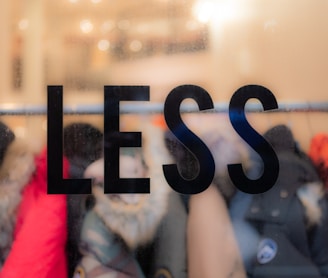The Environmental Impacts of Fast Fashion
Discover the environmental impacts of fast fashion and what you can do to minimize your impact. Learn about textile waste, water pollution, carbon emissions, and labor exploitation, and explore sustainable fashion options like secondhand clothing, quality investments, and ethical brands.
FASHION GUIDE
Saleem Shahzad
5/11/20234 min read


Fast fashion is a term used to describe an industry that produces low-cost, disposable clothing on a mass scale. While fast fashion may seem like a great way to stay up-to-date with the latest fashion trends without breaking the bank, it is having a devastating impact on the environment. In this article, we will explore the environmental impacts of fast fashion and discuss what we can do to minimize our impact on the planet.
Introduction
Fast fashion has become a global phenomenon, with millions of people buying clothes that are designed to be worn only a few times before being thrown away. This has led to a massive increase in textile waste, as well as a range of other environmental problems. In this article, we will explore the impact of fast fashion on the environment and discuss ways in which we can all help to reduce our impact.
What is Fast Fashion?
Fast fashion is a term used to describe clothing that is produced quickly and cheaply, often using low-quality materials and labor. Fast fashion companies churn out new collections every few weeks, encouraging consumers to constantly buy new clothes to keep up with the latest trends. This business model is unsustainable and is having a devastating impact on the environment.
The Environmental Impacts of Fast Fashion
Textile Waste
One of the biggest environmental impacts of fast fashion is textile waste. The average American throws away 80 pounds of clothing each year, much of which ends up in landfills. Textiles that are sent to landfills take years to break down, releasing harmful chemicals into the soil and water. This waste problem is compounded by the fact that much of the clothing produced by fast fashion companies is made from synthetic materials that do not biodegrade.
Water Pollution
The production of textiles is a water-intensive process, and fast fashion companies are major contributors to water pollution. The production of cotton, for example, requires large amounts of water, as well as pesticides and fertilizers that can leach into nearby water sources. The dyeing and finishing of textiles also requires large amounts of water and can result in the release of toxic chemicals into waterways.
Carbon Emissions
The production of clothing is a carbon-intensive process, and fast fashion companies are major contributors to greenhouse gas emissions. The transportation of clothing from factories to stores, as well as the shipping of clothing purchased online, contributes to the carbon footprint of the industry. In addition, the production of synthetic materials like polyester is a highly energy-intensive process that releases large amounts of carbon dioxide into the atmosphere.
Labour Exploitation
Fast fashion companies often rely on low-wage labour in developing countries to produce their clothing. This can result in poor working conditions and labor exploitation, including child labour and forced labour. Workers in these factories are often paid very little and work long hours in dangerous conditions.
What Can We Do to Minimize Our Impact?
There are a number of things we can all do to minimize our impact on the environment when it comes to fashion:
Buy Secondhand
Buying secondhand clothing is a great way to reduce the demand for fast fashion and keep clothing out of landfills. You can find great deals on gently used clothing at thrift stores, consignment shops, and online marketplaces like Poshmark and Depop.
Invest in Quality Clothing
Investing in high-quality clothing that is designed to last can help reduce the amount of clothing you need to buy over time. Look for clothing made from natural materials like cotton, linen, and wool that are produced in a sustainable way.
Support Sustainable Brands
There are a growing number of sustainable fashion brands that prioritize ethical production and use environmentally friendly materials. Look for brands that use organic cotton, recycled materials, and sustainable production methods.
Donate or Recycle Clothing
When you're finished with a piece of clothing, consider donating it to a charity or recycling it. Many organizations will accept gently used clothing for resale or donation to those in need. Additionally, some clothing can be recycled into new materials, reducing the amount of waste that ends up in landfills.
Rent Clothing
If you only need a particular item of clothing for a special occasion or event, consider renting it instead of buying it. There are a growing number of rental services that offer designer clothing and accessories for a fraction of the retail price.
Take Care of Your Clothing
Properly caring for your clothing can help it last longer, reducing the need to constantly buy new clothes. Wash your clothing in cold water and hang dry it whenever possible, and avoid using the dryer or dry cleaning whenever you can.
Conclusion
The environmental impacts of fast fashion are significant and wide-ranging. From textile waste and water pollution to carbon emissions and labor exploitation, the industry is having a devastating impact on the planet. However, there are things we can all do to minimize our impact, from buying secondhand clothing to supporting sustainable fashion brands. By making more conscious choices when it comes to our clothing, we can all help to reduce the environmental impact of fast fashion.
FAQs
What is the definition of fast fashion?
Fast fashion is a term used to describe an industry that produces low-cost, disposable clothing on a mass scale.
What are the environmental impacts of fast fashion?
The environmental impacts of fast fashion include textile waste, water pollution, carbon emissions, and labour exploitation.
How can I minimize my impact when it comes to fashion?
You can minimize your impact by buying secondhand clothing, investing in quality clothing, supporting sustainable brands, donating or recycling clothing, renting clothing, and taking care of your clothing.
What are some sustainable fashion brands?
Some sustainable fashion brands include Everlane, Reformation, Patagonia, and Eileen Fisher.
Why is labour exploitation a concern in the fast fashion industry?
Fast fashion companies often rely on low-wage labour in developing countries to produce their clothing, which can result in poor working conditions and labor exploitation, including child labour and forced labour.
